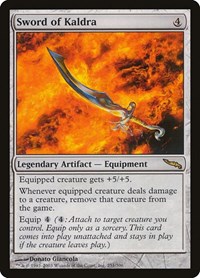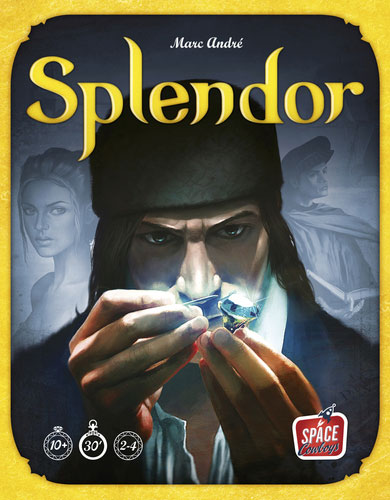Doug's Dungeon - Splendor
Hello! Doug here, finally back to what I arguably do best: write articles about board games for a store’s website.
Speaking of, long time readers may notice the new dazzling Hobbymaster site. Beautiful, isn’t it? The best feature, in my opinion, is that very modern sidebar. Lemme tell ya: It’s a hell of a feeling to tell people your written work is SHOWCASED. IN. A. SIDEBAR. But enough about all that. You’re here to find out what cardboard to spend your money on. Well I’m here to deliver. Presenting: Splendor.
Splendor is a set collection game about earning precious gems. That’s step one. You then spend them on discount-generating cards. Which lead you to bigger cards. And then bigger ones. Suddenly they are handing out points too. Points that win you the game, by the way. Each player is a jeweler, managing their business to prosper and *hopefully* earn a visit from local royalty. The box size for this one is veeeery deceptive. All you need to play are the three decks of cards, some tiles and coloured plastic tokens. Thick tokens. I’m not kidding, do not toss these things around. You’ll dislocate a shoulder for sure. Put them down. Please. As for the rules, Splendor is very, very light. Players can only do a single action on their turn, and there are only so many things you can do. But before we dive into how it plays, let’s set it up.
Each card you see splayed out here is an assortment of buildings, people and… Okay, look. Splendor is a very ‘abstract’ game. One that I won’t spend too much effort trying to narrate. The ‘jeweler’ theme is sprinkled over the game to give it all a sense of cohesiveness. What IS important, however, is the really intense gameplay. On your turn, you can either: pick 3 different gem tokens, 2 of the same token, buy a card, or reserve a card. Grabbing tokens is what players will be doing for the majority of the early game. You need these tokens to buy the improvement cards. Owning these cards provides a discount on any future purchases. That is, if I pick up a card with a diamond on it, I pay one less diamond token for each card I purchase after. Many of you are now yelling into your monitors “THATS NUTS”. And I agree. The core of Splendor is about investment, speculation, and well-timed dick moves.
SPEAKING OF: When a player reserves a card, they take it and put it in a private stash. And they just sit on it. They aren’t buying it. They’re just calling dibs. This may seem like a benign thing, but you might have just spent 2-3 turns picking out a very specific set of gem tokens. So specific, in fact, that you’ve practically screamed which card you want (or need). Then BLEP. Someone just… TAKES IT. Now before you go hate-drafting your way through your first game of Splendor, I should note some things. Reserving cards costs time. You may get a gold token (which is wild), but that’s your whole turn. Also, you are limited to 3 reserved cards. You can empty your hand of your filthy stolen goods (you filthy, rotten card taker), but only by paying their costs to play them. Given this, players can choose to reserve cards defensively. Do that, though, and players with machine-like memory will attempt to muscle you out of gem tokens you need. Which can happen. A lot.
But what’s it all for? Buying up cards from the bottom row is nice. But it won’t get you to the victory point goal. Those juicy points only start showing up in the second buy row. The third row, however, is drowning in them. Naturally, these cards have much higher costs to match. Wise players will need to determine when they need to grab tokens to go to the next level. Finally, there’s the nobles. These snooty lookin’ professors of snootidom care about one thing and one thing only: your cards. You can’t buy the nobles. They COME TO YOU when your stock of cards matches their desires. You can have any number of nobles come to you over the course of the game. But everyone else wants them too. And their desires are no secret. Players will be building not only to grab the upper tier cards initially available, but positioning themselves to attract one or more nobles. Just not young Count Dooku here.
I mean really, no one wants to build a business that attracts this guy as a customer. C’mon. c’mon.
The game ends once a player has gone over 13 victory points among their cards and nobles. This puts an extra emphasis on watching your opponents. Each one a ticking clock, going at varying speeds. You need to be constantly vigilant. Watching. Learning. Ask yourself: Can I outpace player C to the second noble? Will player B take my ruby card… AGAIN? Will player D pitch in for the pizza? While the answer to that final question is ‘unlikely’, the others are muddier. Splendor offers a game that is in constant flux. It has just the right amount of interaction. The right amount of weight. Once I started my second game, I was fully aware of the race. The competition. No move can be done in haste. Any mistake can cost you everything.
I fully recommend Splendor to players of any experience level. It’s very approachable, but deceptively deep. There’s just enough cards and nobles in the box to keep the game fresh for a while.
And I swear to krimbo if any o’ you kids touch my diamond cards again I’m gunna get A N G E R Y.
Want to become a savvy jewel trader? Check out Splendor on our webstore here.

Doug Moore

I'm an avid lover of all things table top. I also have a growing collection of board games which inspire me to create my own. I put my loud and expressive personality to good use as a dungeon master for my friends, having run many campaigns through 4th and 5th edition D&D.
Follow him on Twitter
@Dugggernaut
















